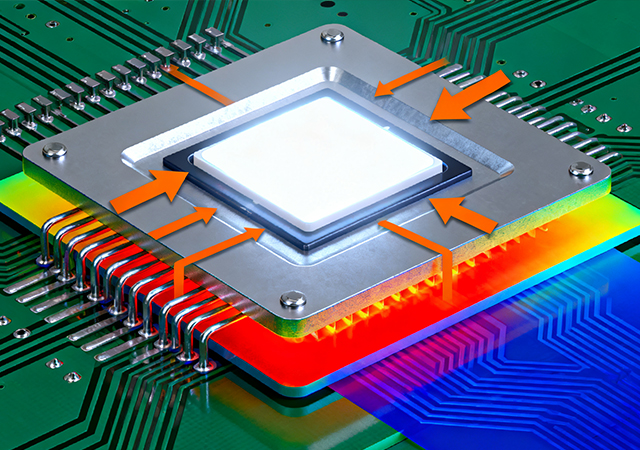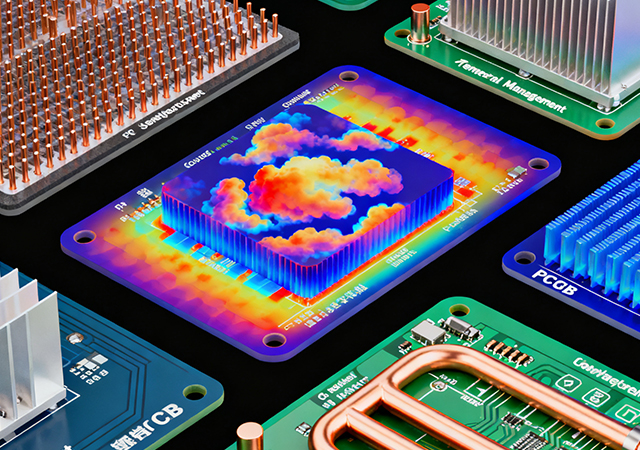-
- PCB TYPE
- PRINTED CIRCUIT BOARD PROTOTYPE ALUMINUM PRINTED CIRCUIT BOARD R&F PCB FPC HIGH FREQUENCY PCB HIGH-TG PCB HEAVY COPPER PCB HDI PCB PCB FOR LIGHTING METAL CORE PCB

In the world of high-flux lighting—from industrial warehouses to stadiums, automotive headlights to UV sterilization systems—two pain points have long plagued manufacturers and end-users alike: rapid luminous decay and premature failure. High-power LEDs (10W+) deliver brilliant, energy-efficient light, but their concentrated heat often seeps into driver circuits, causing color shift, component burnout, and shortened lifespans. What if there was a technology that kept high-flux lighting bright, stable, and reliable—for years on end?

Thermoelectric Separation PCB Tech stands as a groundbreaking advancement in electronic packaging, solving the persistent conflict between thermal management and electrical performance in power-dense devices. Unlike traditional PCBs where thermal dissipation and signal transmission compete for the same conductive paths—resulting in compromised efficiency, signal distortion, or premature component failure—this innovative technology achieves thermal-electrical decoupling through purpose-built layer architecture. By channeling heat through dedicated metallic structures while confining electrical signals to isolated circuits, Thermoelectric Separation PCB Tech empowers high-performance components (e.g., high-power semiconductors, microwave modules, and EV power electronics) to operate at maximum capacity without thermal or electrical tradeoffs. This article delves into the latest technical innovations, comparative advantages over legacy systems, expanded industry applications, critical des

Sinkpad PCB emerges as a critical thermal management solution for electronics where balancing heat dissipation with design constraints—such as space, cost, and electrical compatibility—cannot be achieved with generic PCBs. Unlike standard thermal solutions that prioritize either heat transfer or form factor, a sinkpad PCB integrates a dedicated thermal pad (sinkpad) directly into the board’s architecture, enabling engineers to address application-specific thermal challenges without compromising other design goals. This flexibility makes it indispensable for devices ranging from compact consumer wearables to rugged industrial controllers, where one-size-fits-all thermal approaches fail. This article explores the key design tradeoffs in sinkpad PCB development, customization strategies for diverse use cases, performance validation methods tailored to real-world conditions, and emerging innovations that expand its applicability.

PCB Thermal Management is the backbone of electronic device reliability, encompassing a suite of design, material, and operational practices that control heat generation, transfer, and dissipation throughout a PCB’s lifecycle. Unlike specialized thermal solutions (e.g., active cooling or direct thermal paths) that target specific challenges, foundational PCB thermal management focuses on proactive, cross-functional optimization—aligning PCB layout, component selection, and environmental adaptation to prevent heat-related failures across consumer, industrial, and medical electronics. As devices shrink in size while handling higher power (e.g., wearable health monitors, outdoor IoT sensors, and industrial control units), effective thermal management moves beyond "fixing hotspots" to building heat resilience into every design decision. This article explores the core foundational strategies, material-geometry synergy, application-specific adaptations, and lifecycle-focused practices that d

Active Cooling PCB Thermal Design represents a targeted solution for managing heat in power-dense electronics where passive cooling (e.g., heat sinks, thermal vias) alone is insufficient. Unlike passive systems that rely on natural heat transfer, active cooling actively removes heat from PCBs using energy-driven mechanisms—addressing the critical challenge of compact, high-performance devices (such as AI server GPUs, EV powertrain inverters, and industrial motor controllers) where space limitations restrict passive cooling scalability. By integrating dynamic heat-removal technologies with PCB layout optimization, this design approach ensures components operate within safe temperature ranges while preserving form factor efficiency. This article explores the core active cooling technologies for PCBs, key design integration principles, industry-specific applications, and strategies to balance performance with energy efficiency.

Got project ready to assembly? Contact us: info@apollopcb.com



We're not around but we still want to hear from you! Leave us a note:

Leave Message to APOLLOPCB
